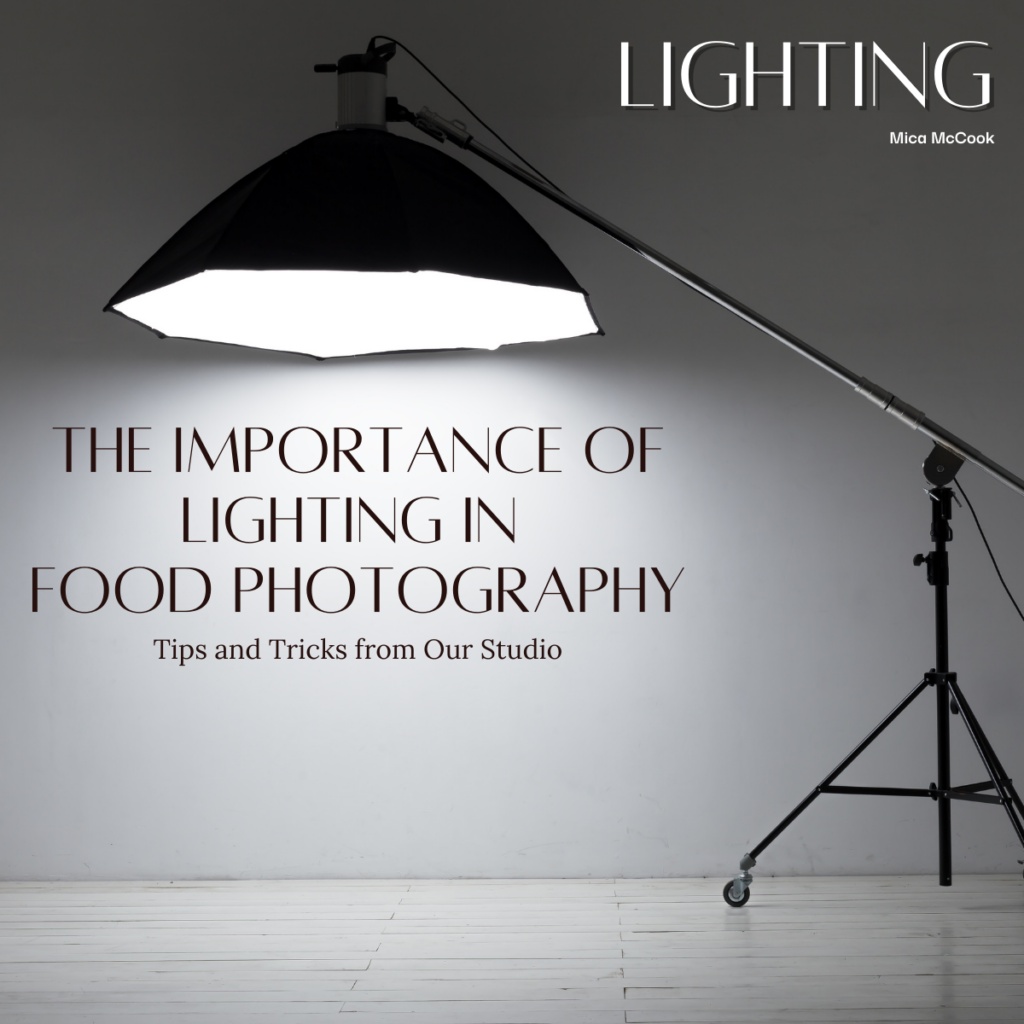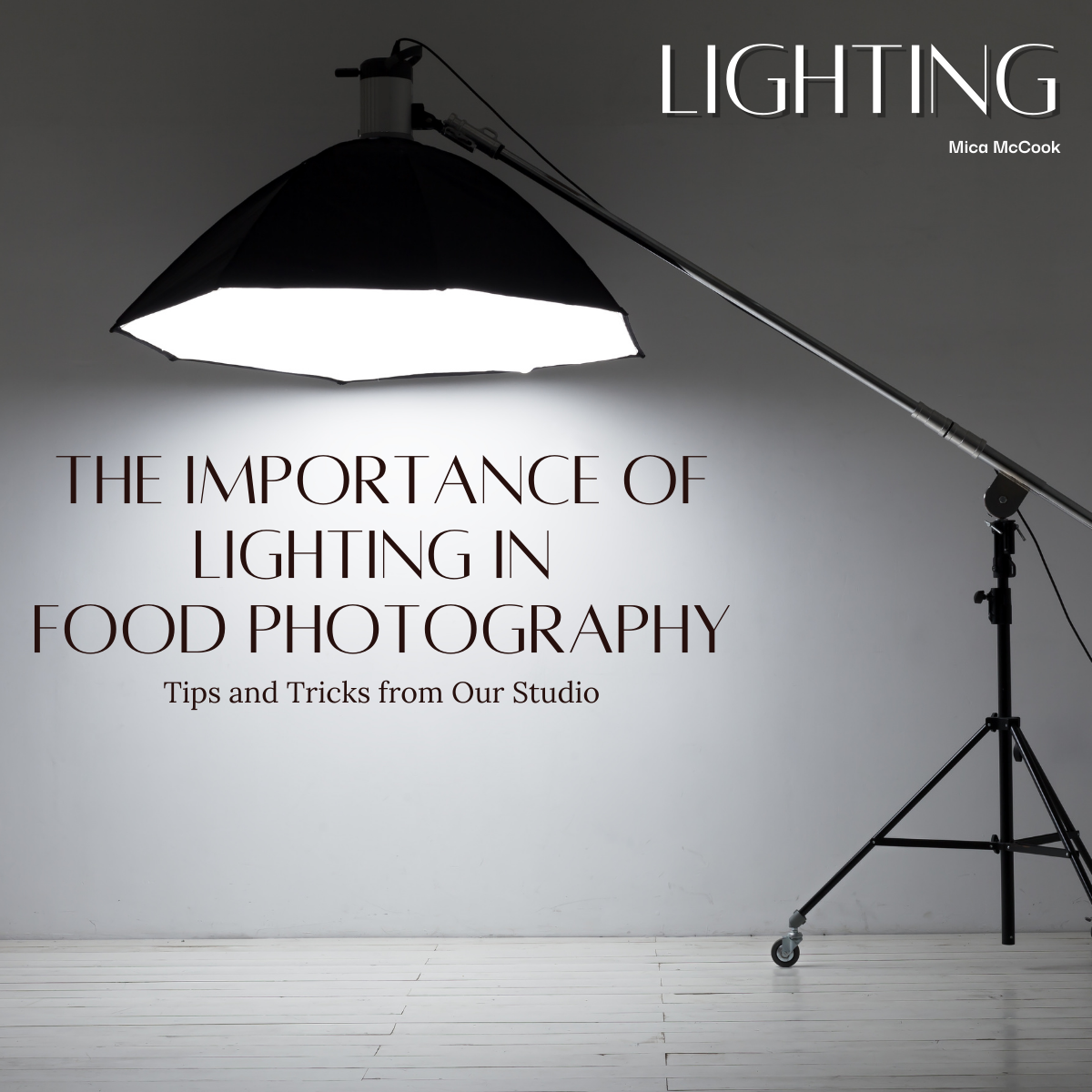March 13, 2023
Introduction
The right lighting can make all the difference between a bland, unappetizing image and a mouth-watering masterpiece in the world of food photography. I can attest to the importance of understanding how lighting works and how to manipulate it to showcase the food at its best as a food photographer. We’ll delve into the nitty-gritty of lighting in food photography. And share some tips and tricks from our very own studio in this post. Whether you’re a restaurant owner looking to showcase your menu or a start-up food manufacturer trying to make your products stand out, understanding the importance of lighting in food photography is crucial.

Light is your friend
Good lighting is crucial for food photography. It helps create mood, atmosphere, and a sense of place, time, and season. Whether using natural or artificial light, it’s important to experiment and find the best setup for your photo. Paying attention to lighting can make your food photos look amazing and impress your viewers. Poor lighting can make even the most delicious dish look unappetizing. Knowing how to use light to your advantage can take your food photography from amateur to professional. Be bold and adjust your lighting setup once you find the perfect look for your photo.
Use a diffuser or large reflector to soften harsh shadows.
Good lighting is essential in food photography. You can use diffusers to soften harsh shadows and reflectors to bounce light onto your subject to create better images. Diffusers come in different sizes and are placed between the light source and the subject to create a softer effect. Reflectors come in various colors and sizes and can be used to create highlights and reduce contrast. You can showcase your dishes in the best way possible by experimenting with different lighting techniques.
Pay attention to the color temperature of your lights.
As a food photographer, I know good lighting is crucial for great photos. Light color matters a lot when taking pictures of food. Light temperature is measured in Kelvin and shows if it’s warm or cool. Different color temperatures can dramatically alter your photos’ mood, color, and contrast. Warmer light (around 3200K) creates a cozy vibe, while cooler light (around 6000K) makes food look fresh. So, next time you’re setting up for a food shoot, don’t overlook the impact of color temperature on your final images. Trust me, it’s worth paying attention to.
Post-Production “Magic”
As any food photographer knows, capturing the perfect shot is only half the battle. Post-production can make all the difference in transforming a good photo into a stunning image that truly showcases the deliciousness of your subject. We use various techniques and tools at our studio to bring our photos to life, including Photoshop and Capture One. We can enhance our images’ color, contrast, and saturation with it. By adjusting these settings, we can create photos that pop off the page and make the viewer’s mouth water. In addition, we utilize an array of plugins and filters to infuse texture and dimension into our photos. This results in a more authentic and attractive appearance. Irrespective of whether you are a photography expert or an avid food enthusiast seeking to enhance your social media presence, gaining mastery over post-production is crucial in producing truly enticing images that leave a lasting impression on your audience.
Lighting is a crucial element in food photography that can make or break a shot.
Acquiring knowledge of the fundamental concepts of light and shadow and testing out an assortment of light sources and modifiers can catapult your food photography skills. Yielding captivating visuals that stimulate taste buds and evoke a mood and ambiance. With these tips and tricks in this blog post, you can hone your craft. Whether you’re capturing culinary delights in a professional studio or your own kitchen. So, keep practicing and pushing your creative boundaries to produce awe-inspiring imagery that delights the senses. Whether you’re snapping shots in a professional photography studio or your own kitchen, the valuable insights and techniques outlined in this article can elevate your food photography to new heights. By incorporating these tips into your photographic approach, you can craft visually striking images that entice the senses and captivate viewers. So, put these strategies to the test and watch as your food photography skills soar to new levels of success. So, keep practicing and experimenting, and remember to have fun!
Looking for vibrant and engaging food photography? Austin Food Guide has you covered. Our skilled team uses dramatic light and fun colors to make your dishes pop. Contact us to take your food photography to the next level!
Related
© 2021 Austin Food Guide | Brand + Website by Carrylove Designs | Reserve Your Spot
